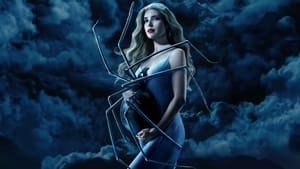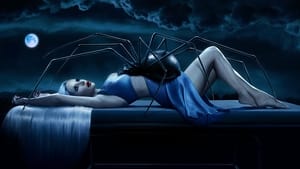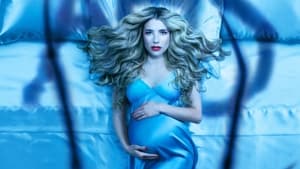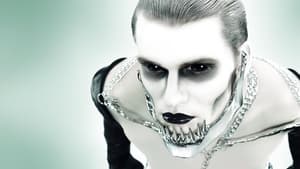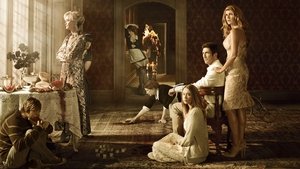

Creator
Creator
Cast
Anna Alcott
Dexter Harding
Siobhan Walsh
Adeline Jouda
Talia Donovan
Dr. Andrew Hill
Ivory
Io Preecher
Kamal
Synopsis
Title: “American Horror Story: An Exploration of Fear in Diverse Settings”
Introduction:
“American Horror Story” is a renowned anthology horror drama series that has captivated audiences with its unique approach to storytelling. With each season centering on different characters and locations, the show takes viewers on a thrilling journey through various settings, each characterized by its own unique horrors and dark secrets. From a haunted house with a murderous past to a summer camp in the midst of an apocalypse, “American Horror Story” explores the depths of fear in a wide range of scenarios. In this essay, we will delve into the series’ ability to evoke fear and analyze how it leverages diverse settings to craft compelling narratives that keep viewers on the edge of their seats.
Body:
- The Haunted House with a Murderous Past:
The first season of “American Horror Story” set the stage for the series by introducing viewers to the Harmon family and their eerie residence, known as the Murder House. This season explores the classic horror trope of a haunted house but infuses it with a complex backstory involving murder, betrayal, and restless spirits. By focusing on the horrors within the confines of a home, the show taps into the primal fear of the familiar becoming the terrifying.
- The Asylum and the Darkness Within:
Season two, subtitled “Asylum,” shifts the narrative to a mental institution in the 1960s. Here, the show explores the horrors of both the medical and supernatural variety, all within the oppressive walls of the asylum. “American Horror Story” takes advantage of the institutional setting to delve into themes of sanity and madness, adding psychological horror to its repertoire.
- The Witch Coven and the Battle for Power:
“Coven,” the third season, takes a different approach by focusing on a coven of witches in New Orleans. This season explores themes of power, identity, and the consequences of wielding magic. By incorporating elements of witchcraft and folklore, the show weaves a narrative that combines supernatural terror with social commentary.
- The Freak Show and Society’s Outcasts:
In season four, “Freak Show,” the series moves to a carnival of curiosities in the 1950s. By showcasing individuals with unique abilities and physical differences, the show explores themes of acceptance, exploitation, and the fear of the other. It demonstrates how society’s outcasts can become both victims and villains in their quest for belonging.
- The Hotel and the Eternally Damned:
“Hotel,” the fifth season, introduces viewers to the dark and opulent Hotel Cortez, a place inhabited by a variety of supernatural entities, including vampires and ghosts. The show highlights themes of addiction, desire, and the pursuit of immortality. The hotel itself becomes a character, embodying the horror of eternal confinement.
- The Farmhouse in Roanoke and Found Footage Horror:
In season six, “Roanoke,” “American Horror Story” adopts a found footage style to tell the story of a couple who experiences terrifying events in a farmhouse. This season explores the fear of the unknown, as the characters grapple with mysterious and malevolent forces that threaten their lives.
- The Cult and the Horrors of Manipulation:
“Cult,” the seventh season, delves into the psychological terror of a modern-day cult and its charismatic leader. This season explores themes of manipulation, fear-mongering, and the fragility of societal order, making it a chilling reflection of contemporary anxieties.
- The Apocalypse and the End of Days:
“Apocalypse,” season eight, takes the series in a dystopian direction by depicting a post-apocalyptic world. It examines themes of survival, desperation, and the consequences of humanity’s actions, all set against the backdrop of an impending cosmic catastrophe.
- The Summer Camp and the Return to Innocence:
In season nine, “1984,” “American Horror Story” pays homage to the slasher genre by setting the story at a summer camp. This season embraces the tropes of ’80s horror, including masked killers and teenage protagonists, while also exploring the fear of one’s past coming back to haunt them.
Conclusion:
“American Horror Story” is a testament to the versatility of horror storytelling. By placing its characters in diverse settings, the series taps into a wide range of fears and anxieties, from the supernatural to the psychological. Each season offers a fresh perspective on horror, creating a compelling anthology that keeps viewers engaged and unsettled. Through its exploration of different characters and locations, “American Horror Story” reminds us that fear can manifest in countless forms, and the darkest horrors often lurk where we least expect them.
TMDb Rating 8.1 5,195 votes
First air date Oct. 05, 2011
Last air date Sep. 27, 2023
Seasons 12
Episodes 130











